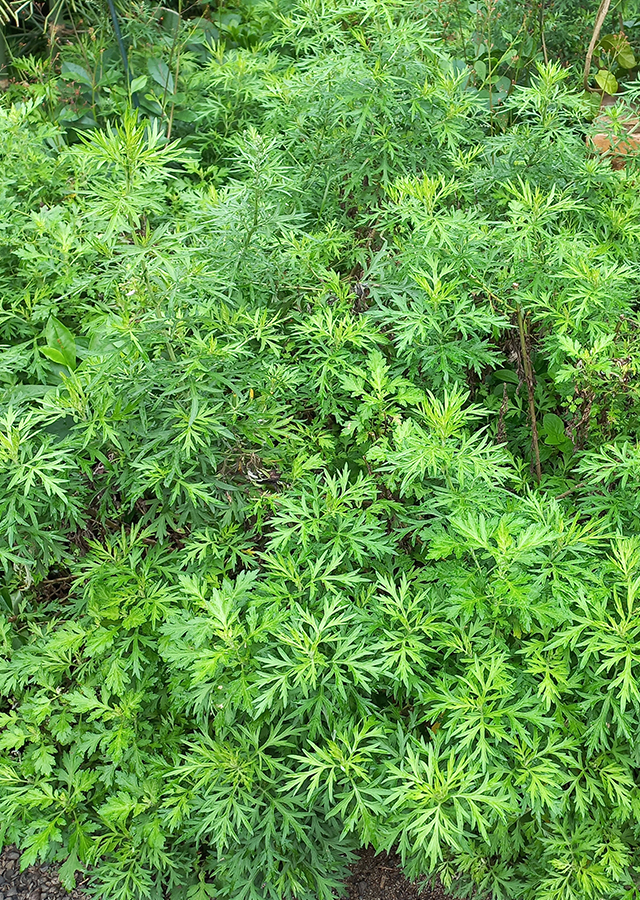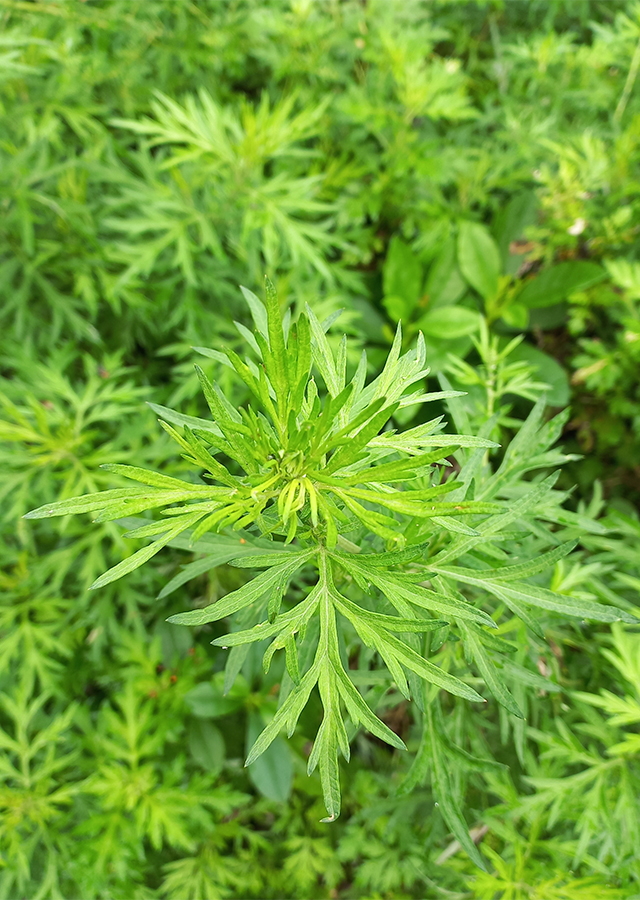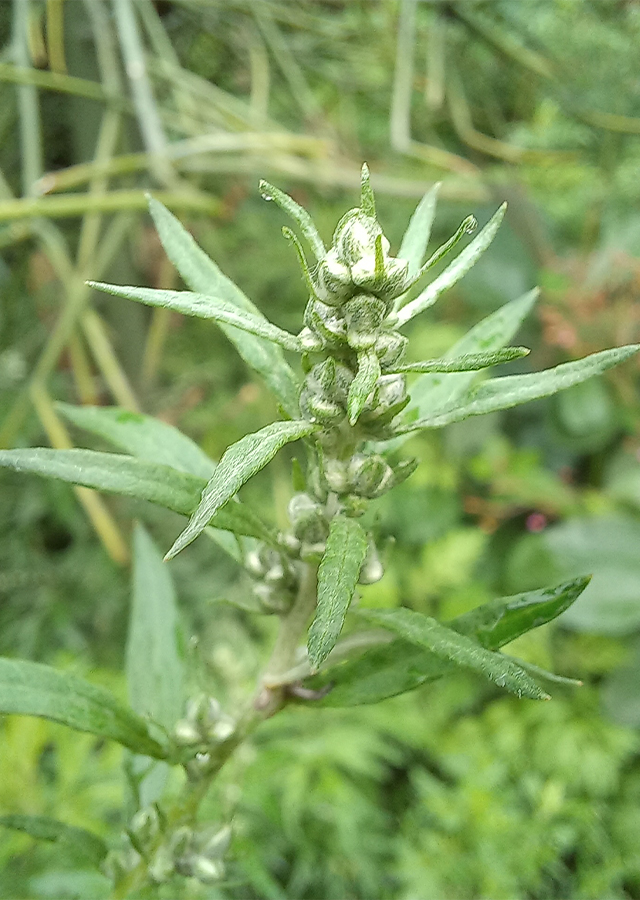Silvery Wormwood
Artemisia argyi H.Lév. & Vaniot
Asteraceae
Location in our garden
Principal



Synonym
-
Habitus
Herbaceous. Herbs strongly aromatic, perennial, or subshrubs, growing 80-150 cm tall
Part Used
Leaves
Growing Requirements
Full Sunshine
Habitat
Forest
Roadside
Terrestrial
Overview
Artemisia argyi is native to Russian Far East and China.The plant is harvested from the wild for medicinal use. It is widely used as traditional medicine in East Asia. It has biological functions including antibiosis, antivirus, antitumor and immunity enhancement. As a new type of feed additive or feed ingredient, it has been applied in animal production and has broad prospect for application.
Vernacular Names
Ai (Chinese).
Agroecology
This species occurs in waste places, roadsides, slopes, hills, steppe and forest steppe; at low elevations to 1,500 m. Generally easily grown, succeeding in a well-drained circumneutral or slightly alkaline loamy soil, preferring a sunny position. They tend to be longer lived, more hardy and more aromatic when they are grown in a poor dry soil.
Morphology
- Root - has many lateral roots, creeping rhizome.
- Stem - shortly branched apically, gray arachnoid pubescent, strongly aromatic.
- Leaves - petiole 2-3 mm; leaf blade ovate, triangular-ovate, or subrhombic, 5-8 × 4-7 cm, abaxially densely gray arachnoid tomentose, adaxially incanous pubescent and white gland-dotted, 1(or 2)-pinnatipartite or -cleft; segments 2 or 3 pairs, usually serrate, base attenuate; veins abaxially prominent. Uppermost leaves and leaflike bracts pinnatipartite to 3-partite, or entire; bracts elliptic, elliptic-lanceolate, or lanceolate.
- Flower - synflorescence a narrow panicle with branches to 10 cm, ascending, lower ones subtended by leaflike bracts. Capitula secund, not touching, subsessile. marginal female florets 6-10. Disk florets 8-12, bisexual. Achenes ovoid-oblong or oblong.
Cultivation
- Generative propagation is by seed. The best way to harvest the seeds is to use 2-3 year old plants. Once the seeds are harvested, they are generally stored in a cool, dry place. But sow in time for next spring, or the seeds will lose their ability to germinate after summer. When the seedlings grow to about 10-15 cm, we can transplant them for pot transplanting.
- Vegetative propagation is by rhizome fractionation.
Chemical Constituents
Volatile oils, flavonoids, three terpenoids, eucalyptus, coumarin, eupatilin, jaceosidin, hispidulin.
Traditional Medicinal Uses
- The leaves are antiseptic, expectorant, febrifuge and styptic. They are used in the treatment of sterility, functional bleeding of the uterus, dysmenorrhoea, coughs and asthma. They are also used in moxibustion.
- The leaves have been found to have an antibacterial action.
- A volatile oil extracted from the plant is particularly effective in the treatment of bronchitis and asthma - the oil is sprayed into the throat and takes effect within one minute.
- It is used in making important anti-inflammatory, detoxifying, and haemostatic drugs
Part Used
Reference Sources
- CAB International. (2022). Artemisia argyi: biological function and application in animal production. https://www.cabdirect.org/cabdirect/abstract/20183374389. 06-03-2022.
- Fern Ken. (2021) Useful Temperate Plants: Artemisia argyi. http://temperate.theferns.info/plant/Artemisia+argyi. 06-03-2022.
- Flora of China. (No date). Artemisia argyi. http://www.efloras.org/florataxon.aspx?flora_id=2&taxon_id=200023167. 06-03-2022.
- Kew Royal Botanic Gardens. (2017). Plants of The World Online: Artemisia argyi. https://powo.science.kew.org/taxon/179226-1. 06-03-2022.
- Raya Garden. (2021). How to Propgate Artemisia argyi. https://www.rayagarden.com/how-to-garden/propagation-methods-of-artemisia-argyi.html#Artemisia-ArgyiDivision-Propagation. 06-03-2022.
